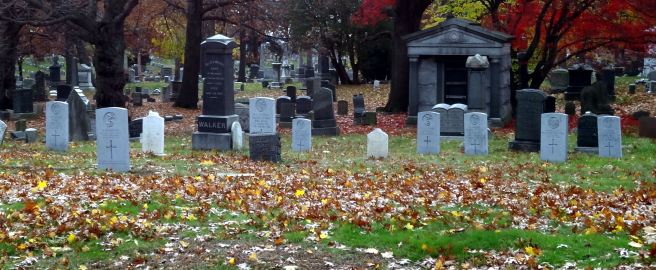This is part of a series of essays about the First World War casualties commemorated by the Commonwealth War Graves Commission in New York.
Little is known of the early life of John Murray other than he was born about 1888 and his sister, Helen, lived in James Street, Kingston-upon-Hull.[1]
A merchant seaman by profession, Murray was embodied into the Mercantile Marine Reserve (numbered 948055) when the commercial liner SS City of London belonging to to the Ellerman City Line was taken up by the Admiralty as an armed merchant cruiser in January 1916. During the war HMS City of London operated primarily on patrol and convoy protection on the East Indies Station but began to escort convoys in the North Atlantic in the summer of 1918. On 10 October 1918 she sailed from Victoria Docks, London and that evening anchored off Brighton. The following day she sailed to Plymouth and on 12 October sailed with a convoy to New York and just after noon on 23 October came alongside at the 55th Street wharf on the Hudson River.
Murray had fallen ill on the trans-Atlantic crossing and died of pneumonia on 23 October 1918.[2] He was buried with full honours, accompanied by a burial party from the ship, on 26 October in Union Grounds, Cypress Hills Cemetery, Brooklyn which lies farther north than the National Cemetery, between Cypress Hills Street and Jackie Robinson Parkway.[3] His grave—in Section 1F, Grave 51—is marked with a United States National Cemetery Marker inscribed ‘John Murry, British Navy’.
1. (Back) The online war memorial for Kingston-upon-Hull conflates three different men in the record for Murray, including details for (a) John McLaughlin Murray, Mercantile Marine, who died in 1917 and (b) a reference to the memorial in St. Charles Borromeo Catholic Church to Private John Prendergast Murray, 1/6th Battalion, The Durham Light Infantry who died in France in 1918.
2. (Back) According to the index to New York municipal death records, his death was registered in New York as ‘John Murry’, which is reflected in the cemetery records and on his gravestone.
3. (Back) The Commonwealth War Graves Commission records his burial as being at Cypress Hills National Cemetery.


 The Seamen’s Church Institute plot in the Evergreens Cemetery, Brooklyn, has the second largest number of First World War CWGC graves in a single plot in the United States—the largest, with 10 men of the Royal Flying Corps and one from the Royal Air Force, being in Greenwood Memorial Park, Fort Worth, Texas.
The Seamen’s Church Institute plot in the Evergreens Cemetery, Brooklyn, has the second largest number of First World War CWGC graves in a single plot in the United States—the largest, with 10 men of the Royal Flying Corps and one from the Royal Air Force, being in Greenwood Memorial Park, Fort Worth, Texas.